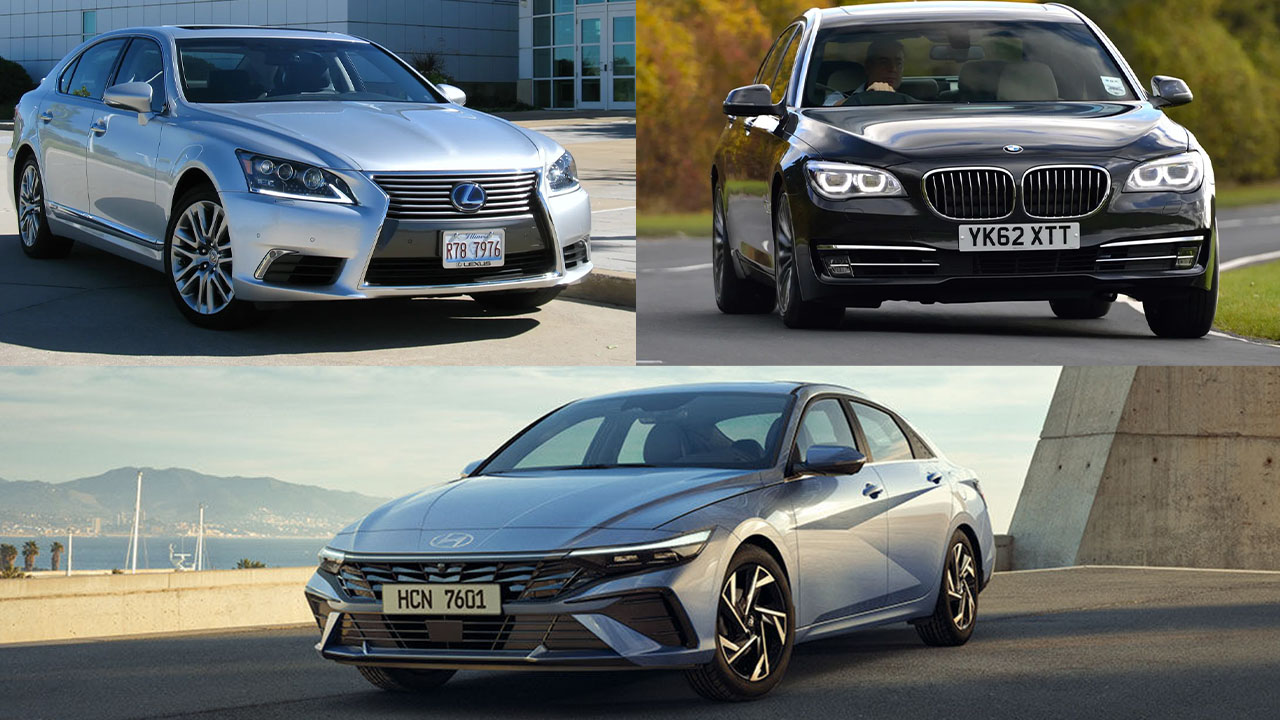Fuel economy is one of the main considerations for car buyers today. As fuel prices continue to rise alongside the overall cost of living, it makes financial sense to choose a vehicle that offers better mileage for your money.
Beyond the cost savings, there are several important reasons to opt for a fuel-efficient car. Firstly, it’s good for the planet. More fuel-efficient vehicles produce fewer greenhouse gas emissions, which contribute to climate change.
Driving a car that’s better for the environment is a meaningful way to do your part in protecting the planet. Secondly, it saves you money.
Did you know 20 percent of the expenditure of an average American family is on transportation? When you can travel further on a single gallon of fuel, your total fuel expenses over the life of the car are significantly reduced.
Thirdly, fuel-efficient vehicles help improve energy sustainability. Since the global oil supply is finite, reducing fuel consumption helps conserve resources and buys time to develop renewable alternatives.
Owners of both compact and large cars typically spend between $500 to $4,750 annually on fuel. If you’re searching for the most fuel-efficient sedans, there are plenty of excellent options available from top automotive manufacturers.
The government is also promoting better fuel economy, setting a goal of achieving a fleet-wide average of 58 miles per gallon by 2032.
Sedans With Great MPG
For now, we’re highlighting the most fuel-efficient sedans currently on the market. To keep the focus clear, this discussion is limited to sedans that rely on internal combustion engines.
1. Mitsubishi Mirage G4
EPA Fuel Economy: 37 MPG Combined
As the Japanese automaker describes it, you’ll “drive for miles and miles” when you get behind the wheel of the Mitsubishi Mirage G4.
While it may not be one of the standout V-8-powered luxury vehicles from the past two decades, it makes up for that with outstanding fuel efficiency, making it one of the most economical sedans available today.
This subcompact car is currently the last non-SUV nameplate from Mitsubishi in the U.S. market and is among the most affordable vehicles you can buy.
The Mirage G4 is offered in four trim levels ES, LE, Black Edition, and SE all of which come with a manufacturer’s suggested retail price under $20,000.
Under the hood, the Mirage G4 is equipped with a 1.2-liter inline-three engine paired with a continuously variable-speed automatic transmission and front-wheel drive.
It runs on gasoline and delivers an EPA-estimated fuel economy of 35 MPG in the city and 41 MPG on the highway, resulting in a combined rating of 37 MPG.
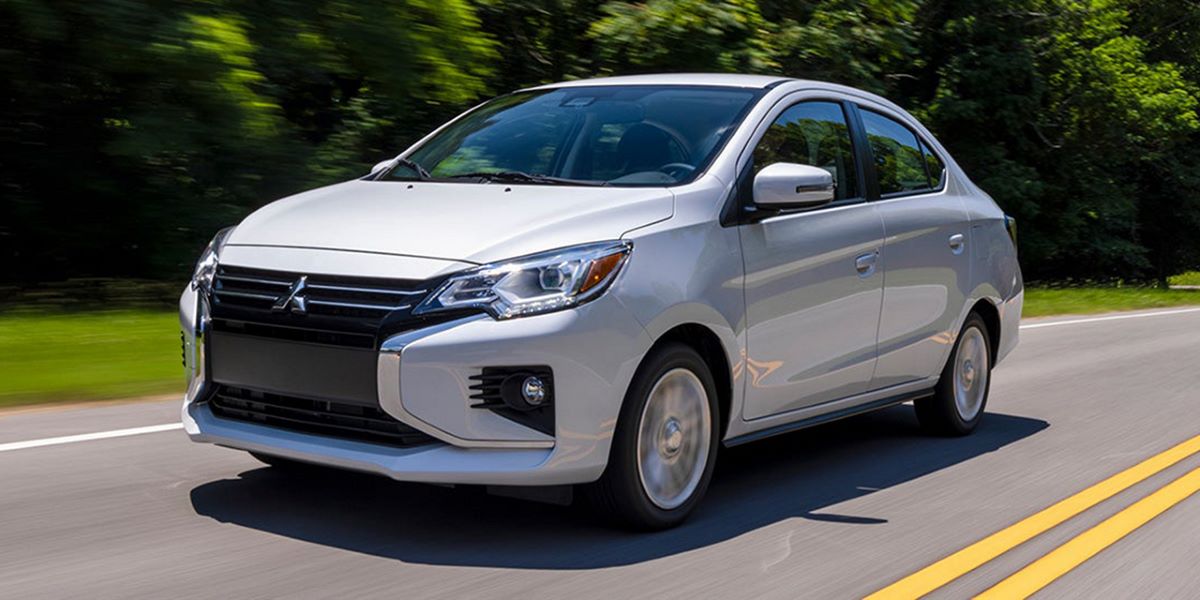
This translates to approximately 2.7 gallons of fuel used per 100 miles driven. With a fuel tank capacity of 9.2 gallons, the car offers an estimated driving range of 340 miles.
Annual fuel costs are estimated at $1,550. When compared to the average vehicle, owning the Mirage G4 could save you about $2,500 in fuel expenses over five years, making it a highly practical choice for budget-conscious drivers.
The 2024 Mitsubishi Mirage G4 is among the most affordable sedans available today, and it certainly reflects its low price tag.
Under the hood, it’s powered by a modest 1.2-liter three-cylinder engine, producing only 78 horsepower, which is shared with the hatchback Mirage. As expected, acceleration is sluggish, but the G4 is highly fuel-efficient.
Inside, the cabin offers decent head and legroom, although the narrow space means that passengers might find their elbows brushing against each other, so it’s important to be mindful of who you bring along. The interior is predominantly outfitted with black plastic, which is typical for this vehicle class.
However, the Mirage does come equipped with a competitive array of standard features, including Apple CarPlay, Android Auto, automatic climate control, cruise control, and automated emergency braking.
Also Read: 5 Smoothest Idling Cars and 5 That Rattle at Stoplights
2. Hyundai Elantra
EPA Fuel Economy: 37 MPG Combined
If you’re looking for a practical vehicle that offers impressive fuel efficiency, sleek styling, responsive handling, and ease of parking in tight spaces, the Hyundai Elantra is a smart choice.
With an EPA-estimated range of 459 miles on a full tank, the Elantra stands out as one of the most fuel-efficient internal combustion engine (ICE) vehicles available today.
The non-hybrid version of the Elantra is powered by a 2.0-liter inline-four engine paired with a continuously variable-speed automatic transmission and front-wheel drive.
It delivers an EPA-estimated fuel economy of 33 MPG in the city and 42 MPG on the highway, with a combined rating of 37 MPG.In addition to its strong fuel economy, the Hyundai Elantra also boasts a stylish and modern design that catches the eye.
Inside, the cabin is designed with the driver in mind, featuring a dashboard and center console that are both visually accessible and within easy reach. Hyundai has also ensured that passengers have ample space, enhancing comfort for both front and rear occupants.
These thoughtful features make the Elantra a competitive choice in its segment, standing up well against rivals such as the Nissan Sentra and the Volkswagen Jetta.
With a fuel tank capacity of 12.4 gallons and annual fuel costs estimated at $1,550, the Elantra offers a well-rounded package for drivers seeking efficiency without compromising on design or comfort.
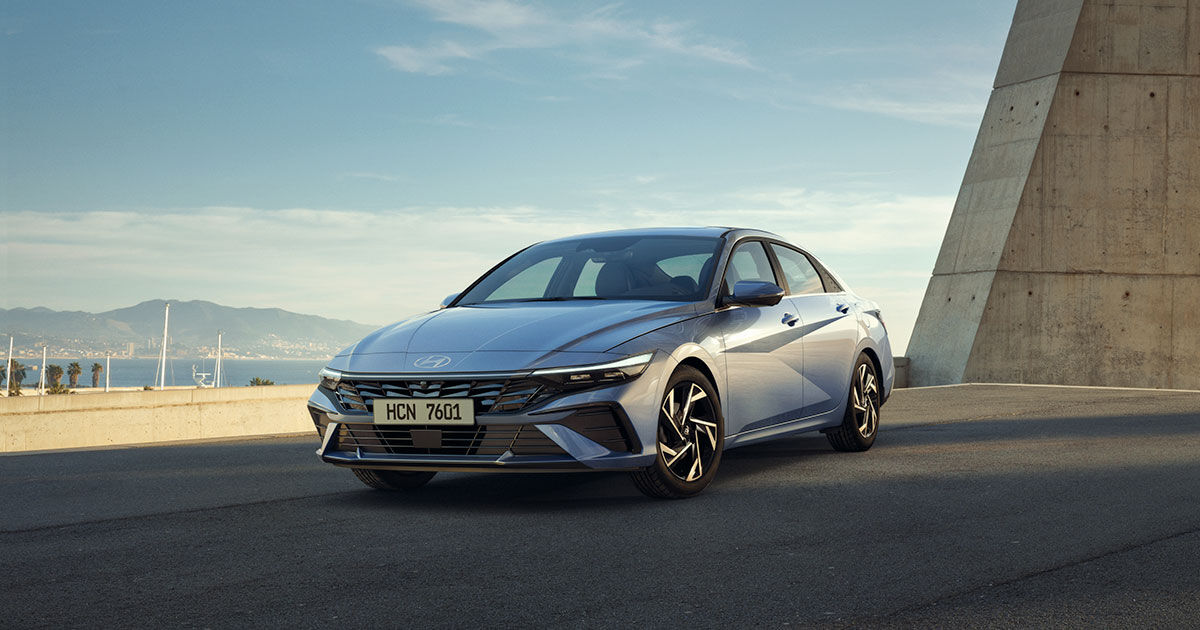
The 2025 Hyundai Elantra is a compact sedan from the South Korean automaker, positioned below the midsize Sonata. However, stepping inside reveals just how spacious modern small sedans have become. Even in the rear seats, adults will find ample room.
The Elantra stands out with its unique styling, a wide array of features for the price, an impressive warranty, and a varied lineup that includes the fuel-efficient Elantra Hybrid and the performance-oriented Elantra N sport sedan.
In terms of cost to drive, estimates for the 2025 Hyundai Elantra SE 4dr Sedan (2.0L 4cyl CVT) are based on 15,000 miles per year, with a mix of 55% city and 45% highway driving, and an energy cost of $3.13 per gallon of regular unleaded in North Dakota.
For the Elantra SE, the monthly cost to drive comes to around $109, which compares favorably to the average midsize car at $160 per month.
The Elantra’s standard 2.0-liter four-cylinder engine is quite fuel-efficient, with the EPA estimating up to 36 mpg in combined city and highway driving. However, it’s worth noting that in our testing, we found its power and acceleration to be rather slow.
or those seeking more performance, the Elantra N Line offers a turbocharged engine, delivering significantly more power while maintaining decent fuel efficiency, with the EPA estimating up to 31 mpg combined.
In terms of competition, the Elantra faces off against other compact cars in the segment, such as the Honda Civic, Toyota Corolla, Mazda 3, Volkswagen Jetta, and Nissan Sentra, as well as its corporate sibling, the Kia K4 (formerly known as the Forte). Our test team’s Expert Rating provides insight into how the Elantra compares to these rivals.
3. Honda Civic
EPA Fuel Economy: 36 MPG Combined
The Honda Civic first arrived in the United States in the early 1970s and has since become a favorite among drivers, known for its long-standing reputation for reliability.
This legacy is supported by numerous awards from respected publications and organizations such as Kelley Blue Book, Edmunds, and the U.S. News & World Report.
Over the years, the Civic has been honored with titles like Best Cars for the Money, Top Safety Pick, and North American Car of the Year, reinforcing its status as a top choice in its class.

In addition to its accolades, the Honda Civic offers sophisticated exterior styling, a roomy and comfortable interior, and impressive fuel efficiency.
The four-door version, equipped with a 1.5-liter turbocharged inline-four engine paired with a continuously variable-speed automatic transmission and front-wheel drive, delivers a combined EPA-estimated fuel economy of 36 MPG.
It achieves approximately 33 MPG in the city and 42 MPG on the highway, giving it a total estimated range of 446 miles per full tank. With a 12.4-gallon fuel tank, filling up costs around $47, making the Civic an economical choice for daily commuting.
Thanks to its efficient performance, there’s no need to look for special techniques to improve fuel economy this vehicle is already optimized for cost-effective driving.
4. Kia Rio
EPA Fuel Economy: 36 MPG Combined
The Kia Rio is another affordable sedan that excels in fuel economy while offering a well-rounded package of features. This compact sedan is equipped with modern tech, offers a smooth ride, and delivers one of the best gas mileages available today.
The Rio is powered by a 1.6-liter inline-four engine, paired with a continuously variable-speed automatic transmission that sends power to the front wheels.
This setup provides an EPA-estimated fuel economy of 36 MPG combined, with 32 MPG in the city and 41 MPG on the highway.
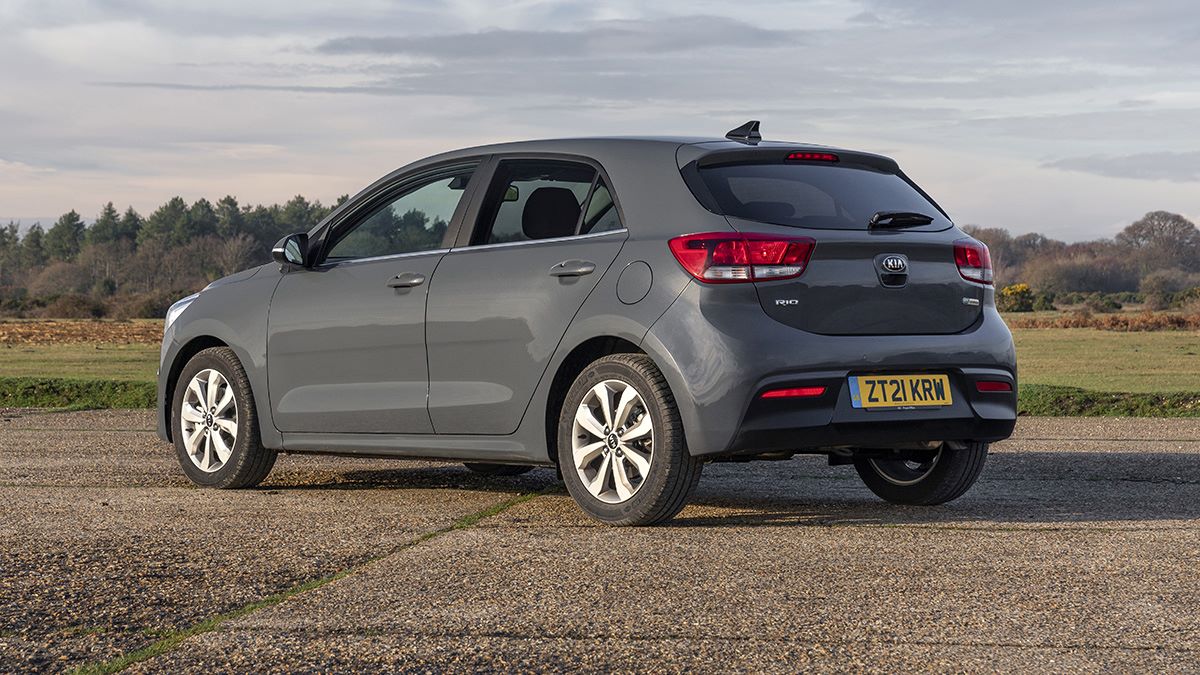
With a fuel tank capacity of 11.9 gallons, you’ll need approximately $45 to fill up, and the car can travel around 428 miles on a full tank. This translates to an impressive 2.8 gallons used per 100 miles.
In addition to its excellent fuel efficiency, the Kia Rio is known for its well-tuned suspension system, which absorbs road imperfections with ease, ensuring a more comfortable driving experience.
This makes the Rio an attractive choice for budget-conscious drivers looking for a car that not only saves money on fuel but also offers a smooth and pleasant ride.
5. Toyota Corolla
EPA Fuel Economy: 35 MPG Combined
The Toyota Corolla sedan has become the least expensive option in Toyota’s extensive lineup in the United States, offering excellent value for money.
The latest Corolla is packed with a range of standard features, provides a comfortable driving experience, and boasts impressive fuel economy.
With its modern design, sophisticated interior, and exceptional fuel efficiency, the Corolla remains a strong and reliable choice for drivers looking for a practical and cost-effective vehicle.
The Toyota Corolla is powered by a 2.0-liter four-cylinder engine across all trims. Its fuel economy is notable, with an EPA rating of 32 MPG in the city, 41 MPG on the highway, and 35 MPG combined.
This translates to just $2.72 for every 25 miles driven, or roughly 2.9 gallons of fuel per 100 miles. The Corolla’s 13.2-gallon tank offers a driving range of up to 462 miles on a full tank, ensuring that drivers enjoy both efficiency and convenience.
Whether you’re looking for an affordable vehicle or one that delivers high fuel economy, the Toyota Corolla continues to be a solid choice for those seeking a dependable, budget-friendly ride.
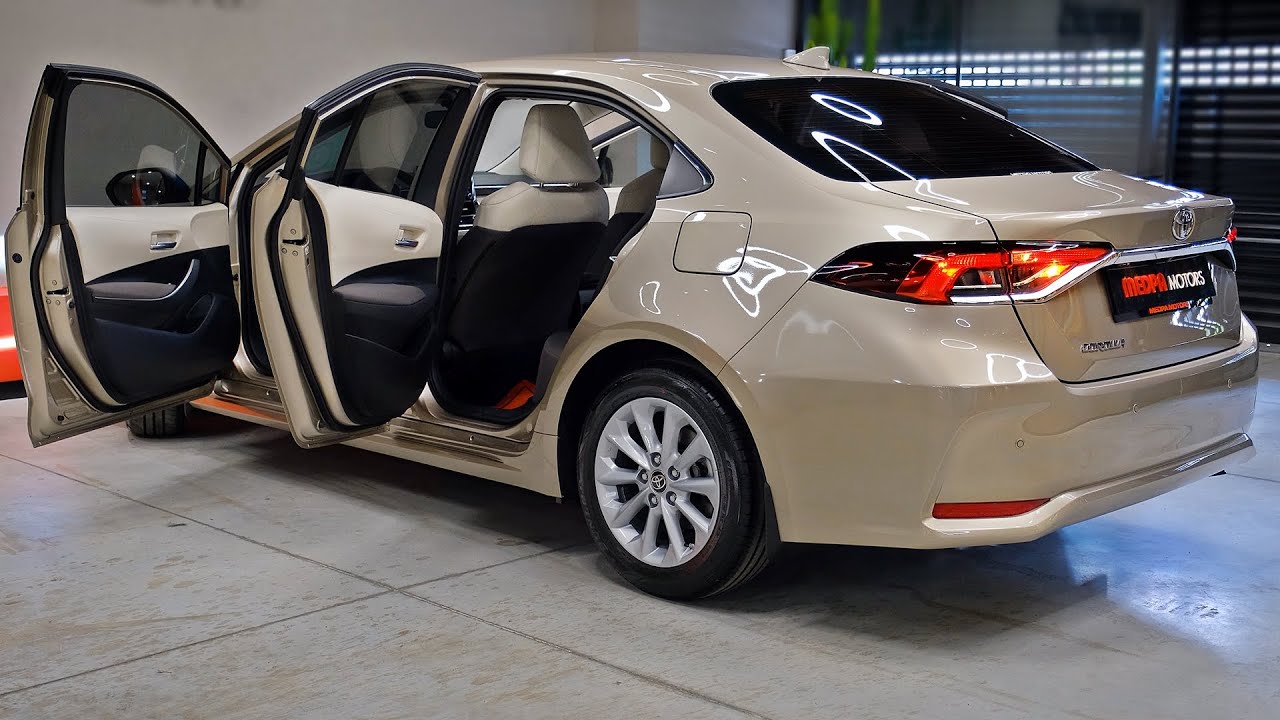
The 2025 Toyota Corolla is available as both a sedan and a hatchback, offering a solid and practical daily driving experience.
While it may not deliver excitement on the road, it excels in providing affordability, excellent fuel efficiency, a wide array of standard features, and a smooth, comfortable ride. Its strong points include great fuel economy, a good value proposition, and an overall comfortable ride.
However, its powertrain is underwhelming, its cargo space is limited, and the rear seat can feel cramped. The introduction of the sport-styled FX trim for 2025 adds a more dynamic option to the lineup.
The Corolla is powered by a 169-horsepower, 2.0-liter four-cylinder engine that provides a reasonable level of power, although acceleration is sluggish, and the engine becomes noisy under hard acceleration.
With front-wheel drive and a continuously variable automatic transmission (CVT), the Corolla takes about 9 seconds to reach 60 mph, and passing at highway speeds is a bit of a chore.
Despite these performance drawbacks, the car’s fuel economy shines, with an estimated 30 to 32 mpg in the city and 38 to 41 mpg on the highway. For even better gas mileage, the Corolla Hybrid is a great option.
As a daily driver, the Toyota Corolla stands out for its practical features and reliability, making it a smart choice for those looking for a no-frills, efficient vehicle. However, its competitors, like the Mazda3, Honda Civic, and Hyundai Elantra, provide more in terms of driving performance and cargo space.
Cars With The Worst Fuel Efficiency
A hybrid car is a vehicle that combines an internal combustion engine with one or more electric motors to enhance output, fuel efficiency, and torque.
Some hybrid models rely more on the electric motor, while others prioritize the gasoline engine, with many offering a balance of both for optimal performance.
Hybrid cars, like the Toyota Prius, often incorporate features such as regenerative braking, which helps recover some of the energy lost during driving.
There are also other types of hybrid cars, such as plug-in hybrids (PHEVs), that allow for external charging sources like wall outlets or quick chargers commonly found at refueling stations.
These hybrid vehicles are equipped with larger batteries, enabling them to drive significantly longer distances without needing assistance from the gasoline engine.
Over the years, hybrid and PHEV cars have undergone significant improvements, leading to a surge in their popularity.
While most hybrid vehicles offer excellent fuel efficiency and extended range, there are some models to be cautious about, as their fuel efficiency may be closer to that of traditional non-hybrid cars.
Also Read: Top 10 High-Performance Automatic Cars of 2025
1. Lexus LS 600h L
The Lexus LS 600h L is the least fuel-efficient car on this list, offering a performance comparable to that of hybrids from brands like Mercedes and BMW.
It features a long-stroke 5.0-liter version of the V-8 engine found in the LS460, paired with a 221-horsepower AC electric motor, resulting in a combined output of 438 horsepower.
This hybrid model comes with an all-wheel-drive system that includes a Torsen limited-slip differential as standard, providing powerful performance and a luxurious interior, though it carries a hefty price tag.
However, its fuel efficiency doesn’t stand out, with an estimated 19 MPG for city driving and 23 MPG on the highway, which is lower compared to other hybrids.
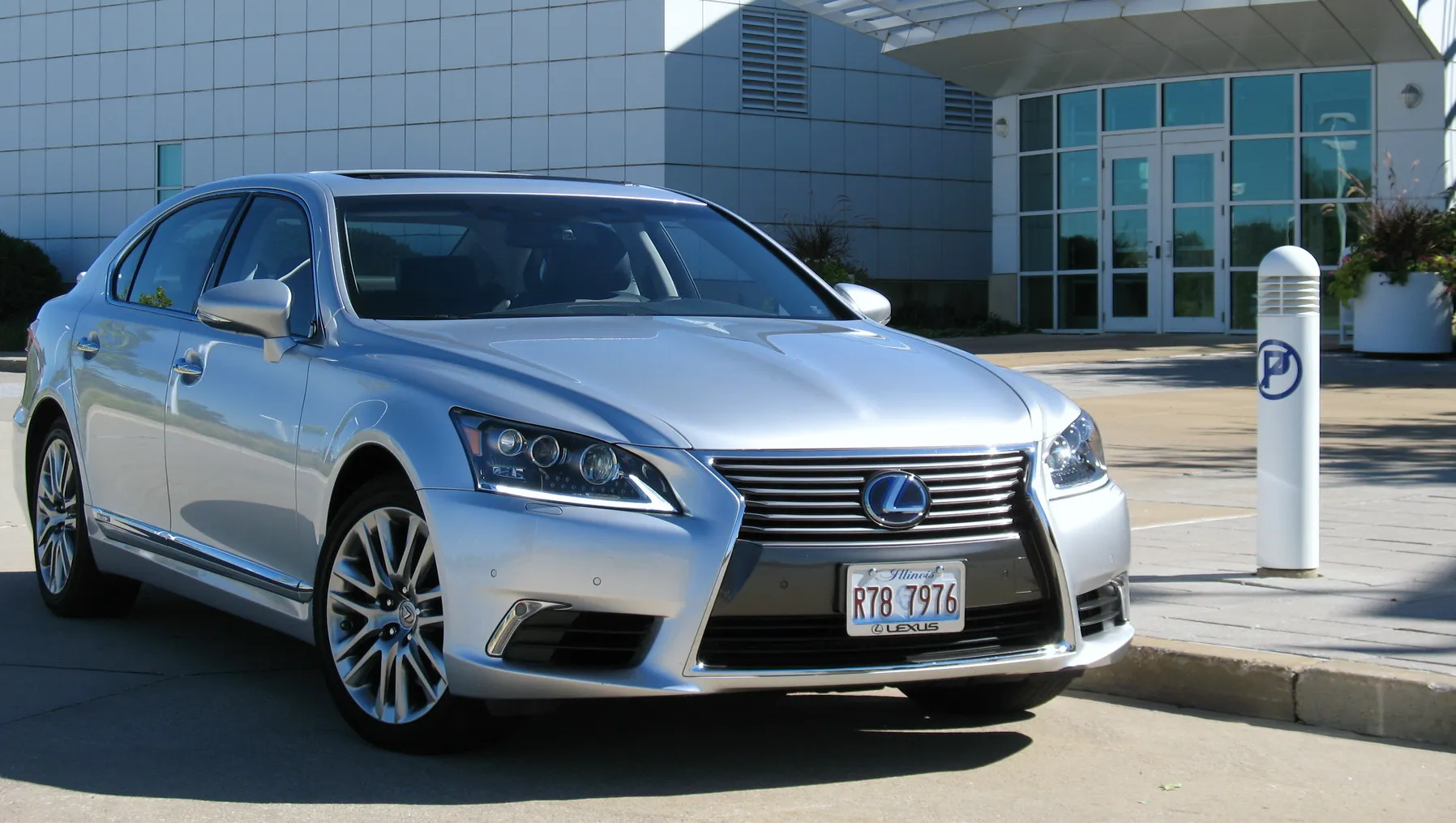
The 2008 Lexus LS 600h offers good fuel economy and an excellent emissions rating for a car of its size, thanks to its hybrid system.
The stereo system is impressive, delivering excellent sound, and it includes a hard-drive music server. Additionally, live traffic reporting is integrated with the navigation system, making it easier to find the best routes to your destination.
However, the LS 600h, while refined in appearance, isn’t exactly a showstopper. The aesthetic design could be more striking, and the organization of music could use some improvement.
In conclusion, the 2008 Lexus LS 600h is a luxurious vehicle that offers a wealth of technology, both under the hood and in the cabin. Its hybrid system provides better environmental credentials than many of its luxury competitors, and its driving performance is excellent.
When the 2008 Lexus LS 600h first arrived in our garage, there were high expectations following our experience with the non-hybrid 2007 LS 460 L, which had earned a perfect rating of 10 after a trip to Los Angeles.
The question was whether this more expensive and high-tech model could uphold that reputation. In many ways, it did—and even exceeded expectations in some areas. However, it didn’t quite meet the mark in others, prompting a shift in how we evaluated the car.
This year, we swapped our safety sub-rating, which was difficult to test accurately, for a design sub-rating, giving us the chance to evaluate the car’s aesthetic appeal.
While the LS 600h is undoubtedly a handsome, refined vehicle with user-friendly cabin electronics and impressive interior space, our consensus was that its looks didn’t make it a true head-turner. To earn a top score in design, a car needs to stand out and catch attention, which the LS 600h, though elegant, did not quite manage.
On every other front, however, the LS 600h exceeded expectations. Despite being pricier than the LS 460 L, it justifies its cost with more power, better handling, and lower emissions.
Rather than simply offering a hybrid version of the LS 460 L, Lexus enhanced the vehicle, increasing the size of the gas engine from 4.6 liters to 5 liters and pairing it with a 165-kilowatt electric motor. All that power is transmitted to the road via an all-wheel-drive system, further improving its performance.
2. BMW ActiveHybrid 7
Similarly, the BMW ActiveHybrid 7, which sits in the higher price range of hybrids, does not stand out for its fuel-saving capabilities.
Priced 25 percent higher than the platform it’s based on, the 750, it only offers a modest 15 to 17 percent increase in fuel economy compared to the standard gasoline-powered 4.4-liter turbocharged V-8.
This car utilizes a 20-horsepower electric motor powered by a trunk-mounted lithium-ion battery, which contributes to a small improvement in fuel efficiency, adding just 3 MPG over the regular gasoline engine.
Despite this modest increase, the ActiveHybrid 7 provides a boost in overall power, with an additional 155 pound-feet of torque and a 13 percent increase in power output.
The 2015 BMW ActiveHybrid 7 luxury sedan can be viewed from a couple of different perspectives. One way to look at it is that it doesn’t offer the best value for a luxury sedan, especially when considering the price premium it commands over a similarly equipped non-hybrid 740Li.
The non-hybrid model accelerates to 60 mph in about 5.6 seconds—just like the hybrid—and its fuel economy is only 2 mpg lower.
With such a small difference in efficiency, the ActiveHybrid 7 would take many years to recoup the extra cost you paid up front.
However, if you’re less concerned about the financial aspect and more focused on how your car aligns with your personal values, the ActiveHybrid 7 offers something different.
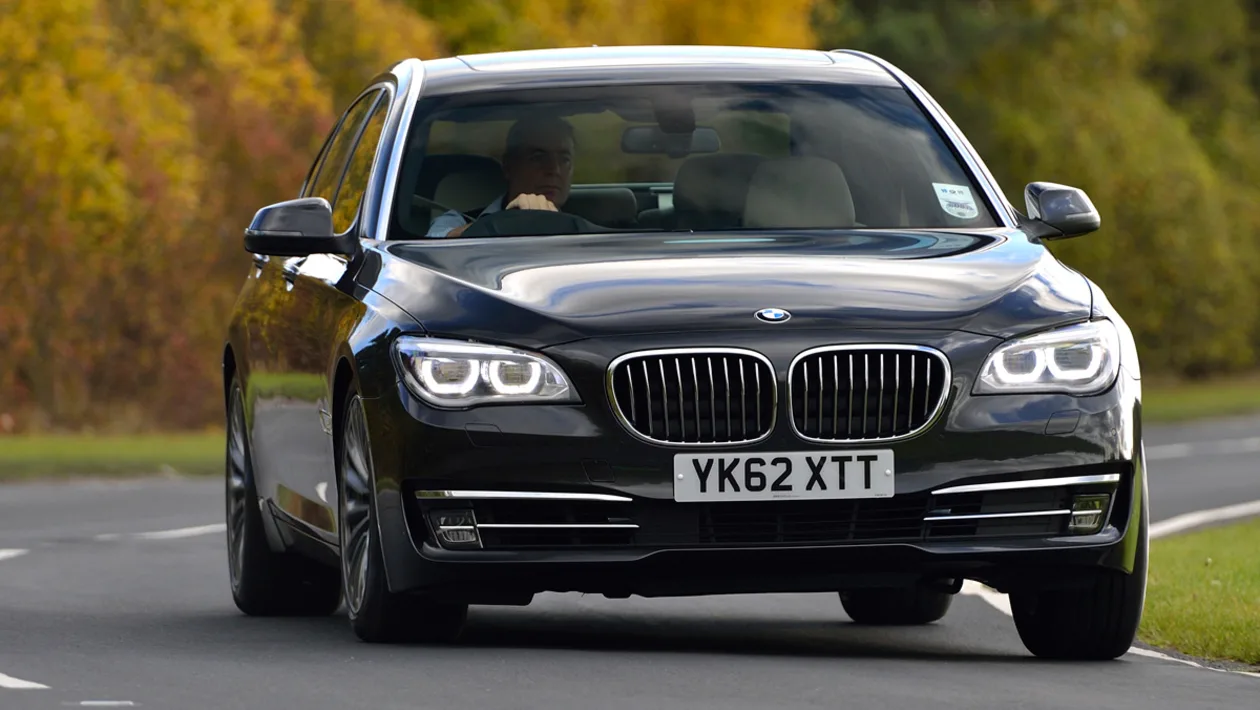
As a hybrid driver, you’re signaling that eco-consciousness matters to you, even if the practical gains in fuel efficiency aren’t dramatic. This mindset is likely behind most of the ActiveHybrid 7’s sales.
When shopping for a full-size luxury sedan, you’re not going to expect Prius-like fuel economy, but every additional mile per gallon does contribute to the overall appeal.
For those who share this second perspective, there are a few other options worth considering. One is the ActiveHybrid 7’s new diesel-powered counterpart, the 2015 BMW 740Ld xDrive.
Priced slightly lower, it comes with standard all-wheel drive and achieves a combined fuel economy of 26 mpg, with a respectable 6.1-second 0-60 mph time.
Another option is the 2015 Porsche Panamera S E-Hybrid, which is much pricier but offers superior handling, a 416-hp engine, and an electric-only range of 15 miles.
If maximizing electric driving is your goal, the Tesla Model S, a fully electric vehicle, could be the perfect fit. Lastly, if the diesel 7 Series piques your interest, consider the 2015 Audi A8 TDI as well. Although it’s slightly slower than the 740Ld xDrive, it impressively delivers 28 mpg combined.
3. Mercedes-Benz E400 Hybrid
The Mercedes-Benz E400 Hybrid is a mid-sized luxury sedan that combines an electric motor with a six-cylinder engine. It features a 3.5-liter V-6 engine that delivers 329 horsepower when paired with the electric motor.
The electric motor on the E400 Hybrid can propel the vehicle at speeds of up to 22 MPH and is powered by a lithium-ion battery pack.
This hybrid sedan is equipped with rear-wheel drive and a 7-speed shiftable automatic transmission. In terms of fuel efficiency, the E400 achieves an estimated 24 MPG in the city and 31 MPG on the highway, which places it in a similar range to the BMW ActiveHybrid 5.
The 2025 Mercedes-Benz E-class is a rich amalgam of refinement, comfort, and innovation—one of the best examples of the luxury car breed. It’s very much the midsize interpretation of the stately and posh S-Class—which is saying a lot—with a corresponding increase in agility and maneuverability.
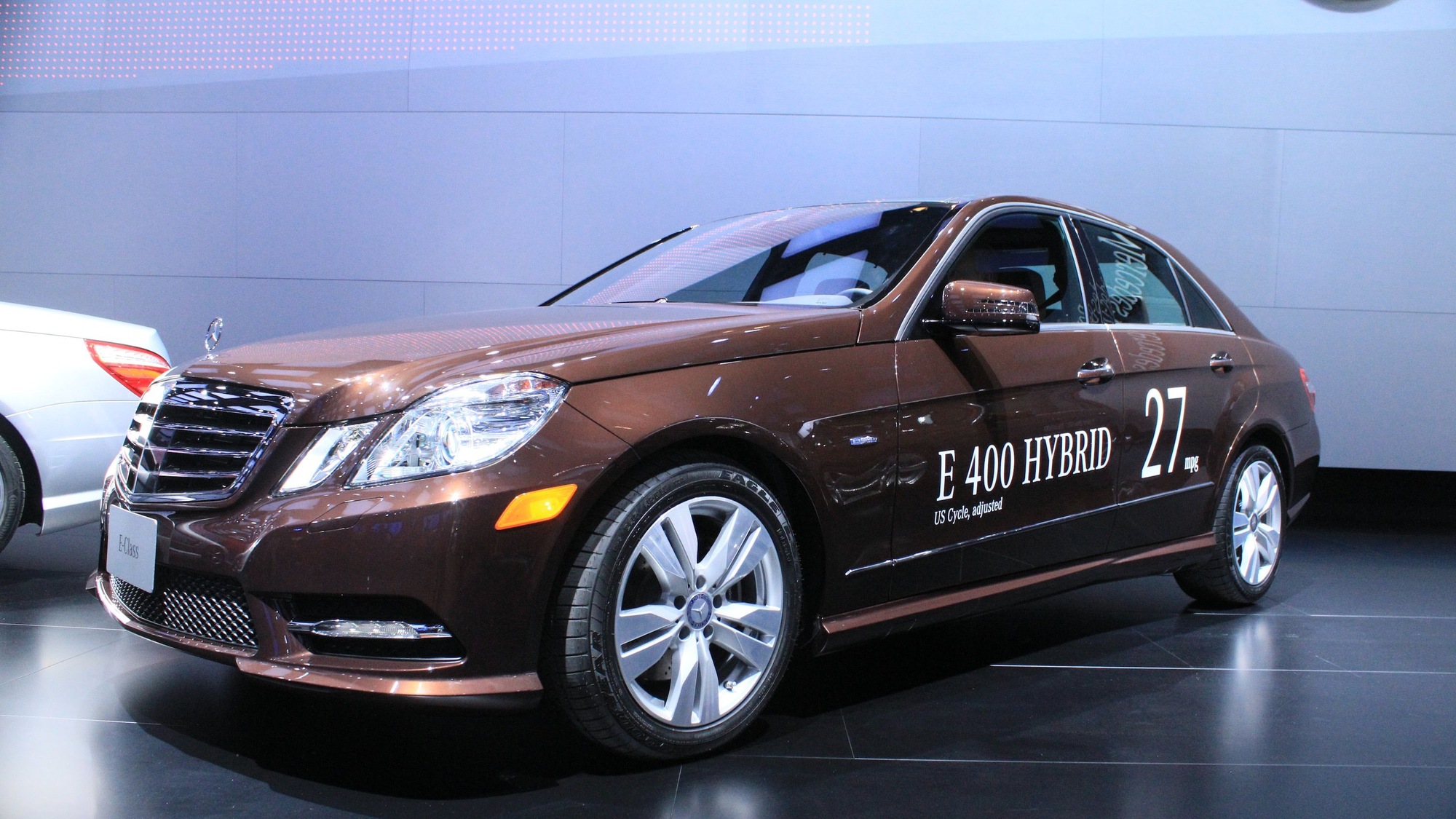
Compared to the BMW 5 series and Audi A6, the E-Class is more luxurious and opulent inside, with a handsomely rendered—if complicated—infotainment system delivering all of the newest tech features. It’s not as sporty or athletic as the BMW or Audi, but for most luxury clients, that’s not a priority.
For the rare driver desiring more performance, the new Mercedes-AMG E53 plug-in hybrid model with 604 horsepower should easily satisfy. We review that model separately.
However, this still falls nearly 30 MPG short of the most fuel-efficient gasoline-only vehicles and about 100 MPG below the top-performing hybrid, the Toyota Prius Prime SE.
4. BMW ActiveHybrid 5
Similarly, the BMW ActiveHybrid 5 is a mid-size luxury hybrid sedan that focuses more on enhancing acceleration and drivability than on maximizing fuel savings.
It combines a turbocharged 3.0-liter inline-six engine with an AC synchronous electric motor and a lithium-ion battery pack to produce a combined horsepower of 335.
The vehicle is equipped with rear-wheel drive and an 8-speed shiftable automatic transmission, providing a smooth driving experience. While the performance figures are impressive, its fuel efficiency falls short, with a rating of 23 MPG in the city and 34 MPG on the highway.
The higher price tag, nearly double that of more fuel-efficient hybrids from brands like Toyota or Honda, undermines the purpose of a car that is meant to save you money.
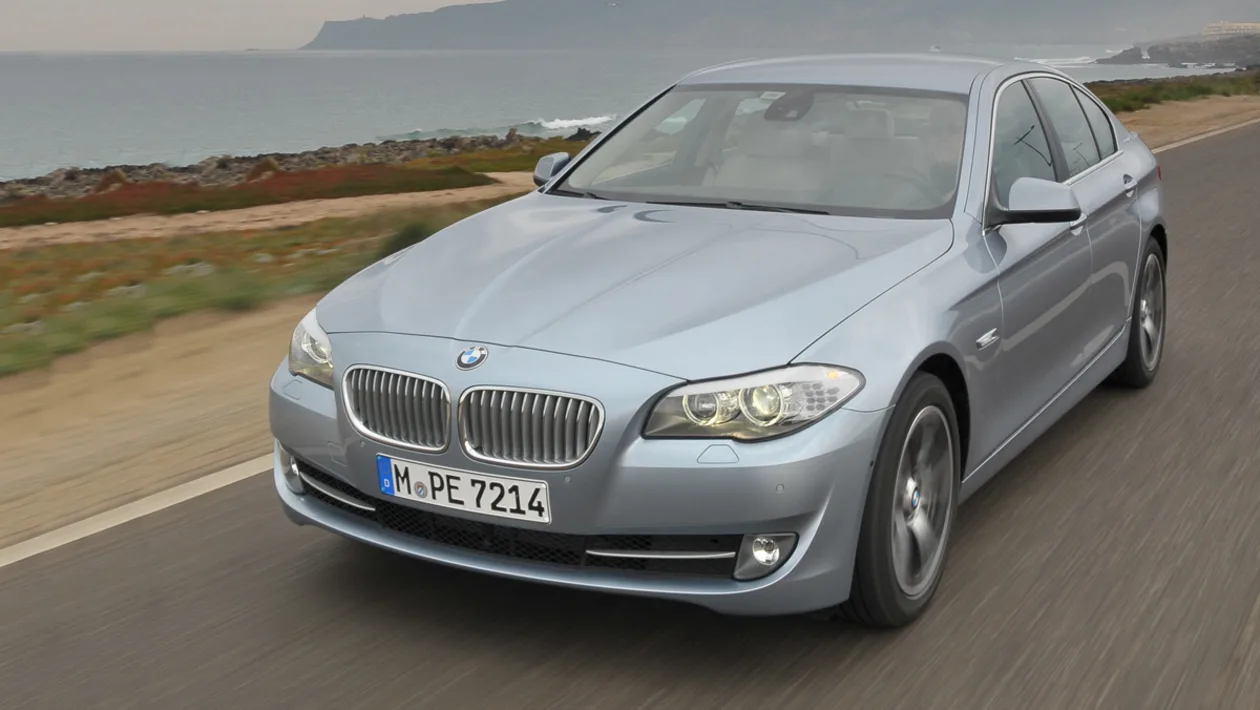
The BMW ActiveHybrid 5 is not an economy car, and this becomes immediately clear when you realize that its primary powertrain is the same turbocharged 3.0-liter six-cylinder engine found in the 535i.
Regardless of the electric assistance, a 300bhp petrol engine is unlikely to make a 5 Series more fuel-efficient than the four-cylinder engine in the 520i, let alone the fuel-efficient diesel engine in the excellent 520d EfficientDynamics.
The ActiveHybrid 5’s fuel economy could improve if its six-cylinder engine weren’t so captivating. For once, we’d have preferred quiet refinement over the addictive exhaust note that comes with it.
BMW, much like Lexus and Infiniti, understands that to make a hybrid executive sedan a viable business option, you need to aim high in terms of positioning.
The cost of the lithium-ion battery, 55bhp electric motor, and high-voltage electronics that come with this car is simply too high for BMW to price the ActiveHybrid 5 at anything less than its nearly £47,000 asking price. Thus, a large and fuel-thirsty petrol engine is deemed necessary to justify both the price and the car’s premium positioning.
As a result, the ActiveHybrid 5 has to offer more than just good fuel economy. To achieve this, its petrol and electric motors work in tandem to produce a peak output of 335bhp between 5800-6400rpm and 332lb-ft of torque from 1000-5000rpm.
This performance is more than sufficient to classify the ActiveHybrid 5 as a lower-end performance saloon. The integration of the hybrid powertrain is noteworthy. The electric motor is located just upstream of the eight-speed ZF automatic transmission, where a torque converter would normally be.
The driveline features two wet multi-plate clutches—one connecting the gearbox to the rear wheels, while the other can disconnect the engine from the transmission below 37mph, allowing the electric motor to independently drive the wheels.
The power for the electric motor comes from a 1.35kWh lithium-ion battery situated between the rear wheel arches.
The high-voltage system is rated at 317 volts and also powers the air conditioning system, ensuring that both cabin and battery cooling continue uninterrupted when the combustion engine shuts off.
5. Saturn Aura Hybrid
The Saturn Aura Hybrid shares its front-wheel-drive platform with the Chevy Malibu Hybrid and features the same powertrainba 2.4-liter four-cylinder engine enhanced by a small electric motor.
This hybrid powertrain improves fuel efficiency by four MPG in the city and one MPG on the highway compared to the standard non-hybrid Aura.
The Saturn Aura Hybrid is equipped with a four-speed automatic transmission and has an estimated range of 488 miles. The interior of the Aura Hybrid is fairly spacious and decent, though there are some cheap-looking elements.
While the quality is generally good, the 26 combined MPG may not be sufficient for those primarily concerned with fuel efficiency, especially when compared to more efficient hybrid models.
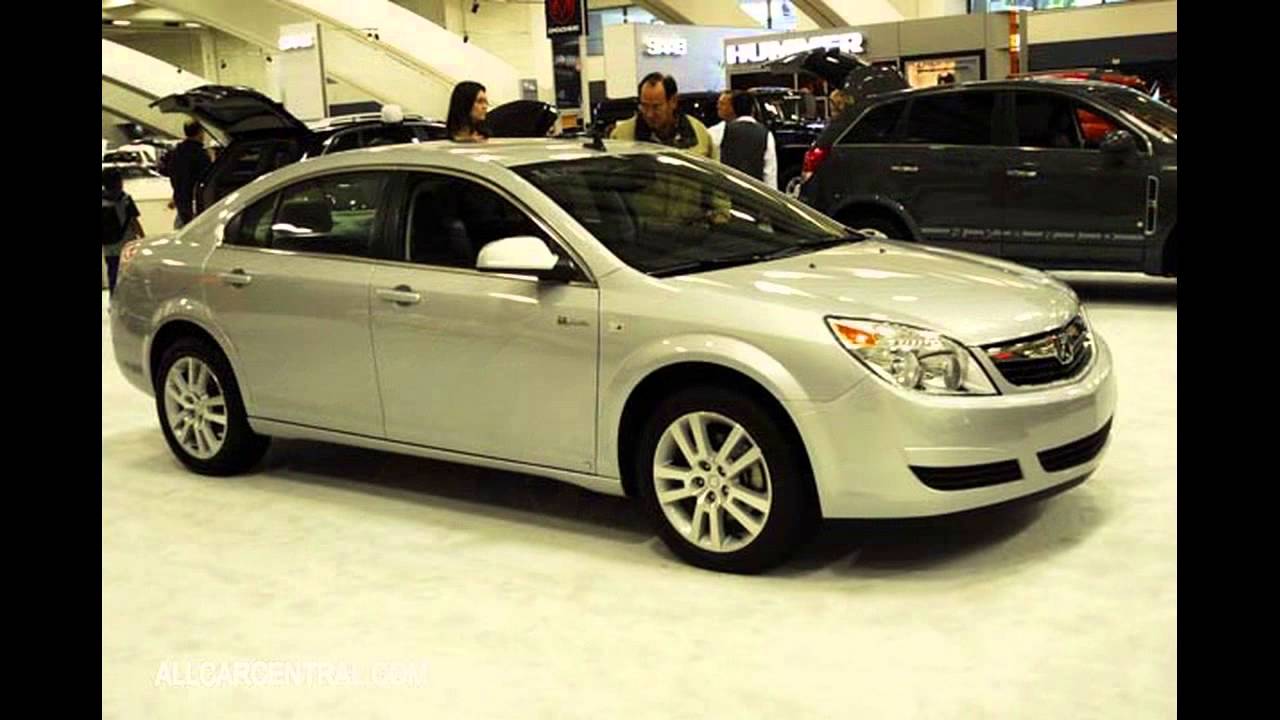
The 2009 Saturn Aura Hybrid doesn’t offer much in terms of standout features, but when it was new, test drivers appreciated its practicality and comfort, along with its attractive exterior design. The Aura Hybrid also boasted a trunk that was larger than those found in competing hybrids.
However, the praise stops there. With a fuel economy of 26/34 mpg city/highway, the Aura Hybrid only slightly outperforms the gas-only Aura, and its city fuel economy lags behind that of many hybrid competitors. Critics were also unimpressed with the engine, describing it as sluggish and underpowered.
The lack of impressive fuel economy made it even harder to overlook the Aura Hybrid’s mediocre performance. On the interior, reviewers criticized the use of cheap materials and the subpar build quality.
The Saturn Aura Hybrid is equipped with a small electric motor and a four-cylinder engine, paired with a four-speed automatic transmission. Standard safety features on the 2009 Aura Hybrid include six airbags, anti-lock brakes, and electronic stability control.

